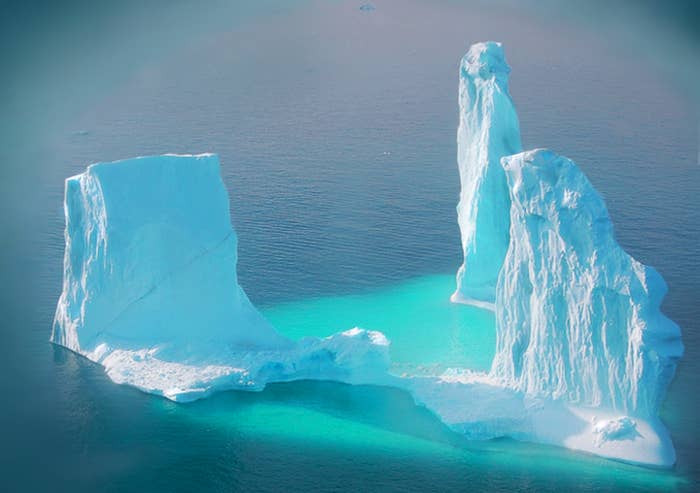
Dreaming of a white Christmas? Maybe skip the Arctic this year, where two days of temperatures far warmer than normal — above the freezing point — aren't helping fix a historically low amount of winter sea ice.
On Thursday, a Danish Meteorological Institute meteorologist, Jesper Eriksen, reported a buoy only 87 miles south of the North Pole had recorded temperatures just above freezing, crossing 32 degrees Fahrenheit.
And there you go: from 5am AKST, a buoy with an above freezing temp at 87N. @Climatologist49 https://t.co/9Td3utHYYY
That's about 40 degrees warmer than normal for this time of year in the Arctic, reports meteorologist Andrew Freedman at Mashable. The two-day heat wave near the North Pole resembles a similar event that happened last year in the region.
Partly as a result, Arctic sea ice remains at a historic low extent as of Thursday, according to the National Snow and Ice Data Center. Open water that absorbs heat and allows warm winds to penetrate farther north despite the onset of winter have slowed the annual regrowth of sea ice.
A series of storms have battered the sea ice as well, creating a series of temperature spikes far higher than normal all winter.
Despite the expectation that climate change would reduce Arctic ice cover, scientists are still surprised at what they are seeing this year. NOAA's Arctic Report Card reported historic high temperatures for the region in September, contributing to this year being the likely warmest on record.
A huge pulse of anomalous warmth over the north pole during today and tomorrow, will certainly not help sea ice re-… https://t.co/dGNVKeFEfB
